|
Hela Viru Rasa Udanaya 2014:
Reviving tastes of a bygone era
By Kurulu Kariyakarawana reporting from Nuwara Eliya
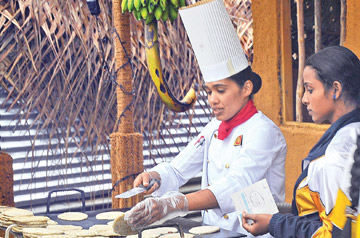 |
| Pan fresh food
to titillate one's taste buds |
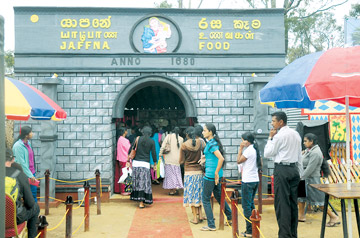 |
| The
mouth-watering Jaffna stall |
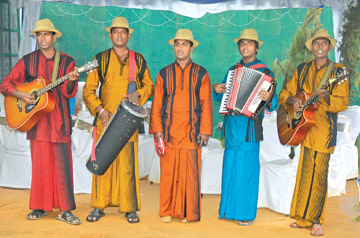 |
| A Bonjo bands
that entertained the crowds |
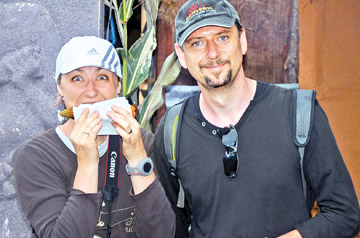 |
| Foreigners
enjoying corn on the cob |
|
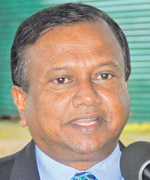
Major General
Udaya Medawala
|
"Suwandai muwe mal peni, nethangin hele nilmini, Maa jeewithe pana
weni, nelwen duwe roshini..."
These beautiful musical notes of Sumith Ahangama played by many bongo
bands simultaneously was the welcome anthem that was gently brought to
our ears by the cool breeze that wafted in Nuwara Eliya, when we stepped
into the first ever authentic food festival in the country organised by
the Sri Lanka Army.
Having the picturesque Gregory Lake in the backdrop, the multiple
stalls set up on the meadow served hot and spicy exquisite cuisines of
all time the country had ever produced. The atmosphere was filled with
the fine aroma of warm food being served every minute. It was mouth-
watering and of course inviting to try a bite.
A cup of warm Belimal or Ranawara to rejuvenate the burnt out energy
in this cool climate or a chilled mug of beer to back the traditionally
grilled slice of piping hot fish or boiled corn were ideal beverages to
go with the sweet and spicy delicacies to be displayed at each stall. In
other words, Hela Viru Rasa Udanaya was a haven for both local and
foreign foodaholics who happened to visit Nuwara Eliya this new year
season.
The authentic food festival commenced on April 15 and was held for
eight days running, attracting over a crowd of 93, 000 from many parts
of the country, from 12.00 noon to 10.00pm everyday. The intention of
this festival was to revive the unique Sri Lankan food culture that is
being slowly and steadily ignored and forgotten by many of us. A
nation's culture is preserved by virtue of many aspects. One of the main
identities of the uniqueness of a civilisation is the authentic food of
that particular country or region.
When a country has a unique food culture, different parts of that
same country has different varieties of food cultures. But with the
passing of time, many of these food varieties are forgotten by people
who would invent and embrace newer cuisine.
Major General Udaya Medawala, Commander of Security Forces
Headquarters Central, who was the main person behind this one- of- a-
kind food festival said that it is not only for the first time in Sri
Lanka but perhaps for the first time in the world, a country's Army has
organised such programs to reintroduce and promote authentic and
heritage foods of that particular country. Unlike many big countries,
Sri Lanka being a small island has a rich diversity in its nine
provinces which is climatically and culturally unique features.
Likewise, the food belonging to each of these provinces also differ from
each other. Another aim of this program was to gather hundreds of
varieties of such food in one place, which would be a rare experience
not only for eager tourists but also for exploring locals.
Reintroducing these typical foods of different provinces was not an
easy task as the military had to do lot of homework prior to the
exhibition. Different regiments and brigades in each province had to do
research for several months prior to the event as to enlist and find the
heritage foods of that respective province and their recipes. This was a
tricky business as many old dishes which are hardly to be seen nowadays,
were known only by a handful of senior citizens in those areas. Army
Chefs and food researches had to meet these people to get the recipes
and to learn how to prepare them. Hundred and eighty carefully selected
chefs of each regiment and brigade covering all the provinces and main
cities were summoned to cook food for the festival which were displayed
in different stalls in a colourful manner.
There were nine main stalls belonging to the respective provinces
named in a unique and attracting way. The Western Province stall was
named as 'The place that creates many flavours', Central Province - 'Flavours
of the Hill Country', Uva Province - 'The aromas of Wellassa',
Sabaragamuwa Province - 'Flavoursome cuisines from Sabaragamuwa', North
Western Province - 'The diverse flavours of fertile Wayamba', Eastern
Province - 'Cuisines from the land of the rising sun', Southern Province
- 'Local flavours of the south', North Central Province - 'The
distinctive taste of the reservoir rich land' and Northern Province - 'A
range of flavours amidst Palmyrah Palms'.
Not only foreign tourists from the West but even the locals were
amazed to learn that there were over 600 types of foods being displayed
at each of these varied stalls. It was also interesting to note that the
festival was enriched with all types food found in Sri Lanka, from
different varieties of rare rice dishes and vegetable and fish and meat
curries to rare yams and grains to exquisite sweet desert delicacies
hardly found on the rural Sinhala and Hindu New Year domestic food table
to popular burgers and fries and Mediterranean specialities found in
Colombo and its suburbs. From not very common foods found in the urban
areas like Thalapa, Anama and uncommon names like Bondi Aluwa and Patta
Dodol from Hambantota as well as Midi Wedi from Mannar were some
striking specialities.
People were busy trying out the various food types with their desired
drinks of that nature. Something which the organisers noticed was that
there were different trends in trying different foods depending on the
age categories. Most of the youth were y attracted to urbanised western
food like burgers, sausages and French Fries whereas the middle aged
groups always wanted to try something new and rare from each province.
The older visitors depend on authentic food that originate from their
own areas.
There were many fun- filled activities to entertain the foodaholics
arriving in droves .
A carnival atmosphere prevailed, evening musical shows the large beer
garden and not forgetting the unique feature of all, the Bongo Bands
entertained the crowds that thronged the venue.
There were 44 military Bongo Bands from all Corps of which 22 bands
played everyday. It was a distinctive feature t watch all 22 bands play
the same song simultaneously scattered across the food festival giving a
novel musical experience to those who indulged in the delicious and
delectable food.
Following the success of the food festival. the Army is planning to
hold this as an annual national event and include it in the Army
calendar. The first festival was held in Nuwara Eliya as it is the top
destination of many during the Sinhala and Hindu new year holidays.
In the future the program will be taken to different provinces to
give it a different look.
The military has also introduced various competitions for a staff of
over thousand soldiers and officers to take part in the event. The best
stall will receive a cash price of Rs.20, 000. Second and third places
would also receive attractive merit prizes. |

